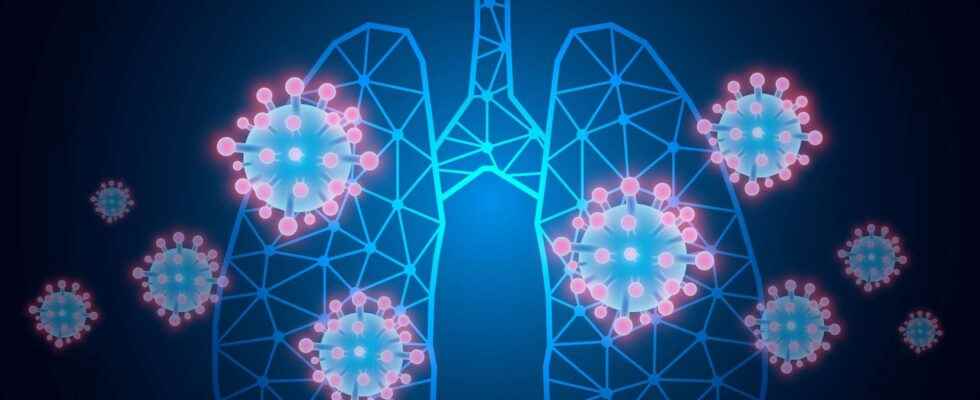Breathless patients after Covid-19, however, show no problem on lung scans. But another more thorough examination revealed a dysfunction in the exchanges between the pulmonary alveoli and the blood.
You will also be interested
[EN VIDÉO] Are we protected against Covid by having been infected? A coronavirus infection induces an acquired immune response. But for how long is it effective against variants?
Inhale Exhale. An innocuous reflex for most people, but which becomes a real test when the lungs are damaged. Some patients with Covid-19 experience it to their cost during the acute phase of the disease, and sometimes, a long time afterwards. Shortness of breath is one of many long covid symptoms that affects the daily lives of patients. British scientists have detected anomalies lungs through a special examination in patients for whom the scanners and other routine examinations showed no problems. The results have not yet appeared in a peer-reviewed journal.
The examination performed is called a MRI to xenon hyperpolarized. A complex technique during which a patient lying in the MRI machine inhales hyperpolarized gaseous xenon, then holds his breath for a few seconds while taking images. Thus, scientists can follow the gaseous exchanges that take place with each breath between the millions ofpulmonary alveoli and the blood capillaries surrounding them. ” Xenon follows the oxygen pathway when absorbed through the lungs and can tell us where the abnormality is between the airways, the exchange membranes of gas and capillaries in the lungs », explains Jim Wildfrom the University of Sheffield.
MRI is not a routine test to explore lung problems because it gives poorer results than other imaging tests like x-ray or CT scan. But, in this case, it made it possible to reveal the invisible.
Anomalies that were once invisible
Hyperpolarized xenon MRI has been used on a handful of patients included in a study called Explain which looks at long Covid. The persistent abnormalities have been seen in patients with Covid long after an initial infection that did not require hospitalization. For seven of the eleven patients included in the study, significantly reduced gas exchange was observed.
The small size of the cohort does not allow to interpret these results beyond the observation, nor to say that it is a problem of gas exchange between the lungs and the blood which is at the origin of the shortness of breath patients. A similar observation had been made in May 2021. The same team had identified abnormalities on hyperpolarized xenon MRI in hospitalized patients this time around. The results published in review Radiology are in the same direction as those presented here.
” This is an interesting finding that deserves further study. Currently, due to the small sample size, it should be considered a generator assumptions. It would be good if the authors now expand their study to include more patients, including those without significant shortness of breath, alongside participants who have previously been infected with Covid-19 and who have fully recovered. This will help us better understand the cause of shortness of breath in the long Covids and whether these anomalies play a role », comments Colin BerryProfessor of Cardiology at the University of Glasgow.
Ultimately, the Explain project hopes to enlist several hundred people to improve the diagnosis and care of people with long Covid.
Interested in what you just read?
